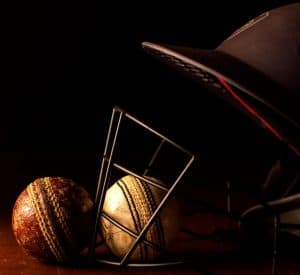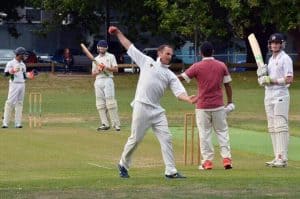The days when the Australian cricket team couldn’t muster 20 pullups between the entire squad are well and truly behind us. Over the past decade or two, cricketers have gone from being among the least-fit athletes on the planet to obvious examples of what a professional athlete should look like and how they should perform on the field. Just look at the pace at which Mitchell Starc bowls or the fielding ability of Glenn Maxwell, an athlete who’s just as adept with both bat and ball, as many cricketers are in these exciting times of non-stop cricket.
Fitness has become so integral to cricket in recent times that every man and woman on the field needs to be in top shape whether they prefer to wield the willow or bowl a mean leg spin. Despite their immense talent, ability and formidable desire to win, there are very few professional cricketers leading Shane Warne or David Boon-like lifestyles, as cricket in its many glorious forms has changed and so too have attitudes among players towards fitness.
The unrelenting nature of professional cricket with the IPL luring the crème de la crème of international players to the subcontinent with its massive pay packets is seen by many as having made peak physical fitness essential. However, it’s also worth noting that the shorter formats of the game, most notably T20 cricket, have made cricket a much faster sport and this has increased the need for all players to be in excellent physical condition so that they can play for club and country throughout the year.
Whether your preference is to wield a Gray Nicolls cricket bat or a red or white Kookaburra ball, the following cricket fitness tips will help to improve your fitness, strength and stamina, minimise the risk of injury and keep you on the field for longer. Whether you’re a seasoned player working towards a professional career or a youngster just starting to get serious about cricket, these cricket fitness tips will help you get more from your game.
Stretching and Warming Up
Without proper stretching techniques to help you warm up, you’re putting yourself at risk of injury and that could cut your cricketing career short. Whether batting, bowling or fielding, you need to prepare both your upper and lower body by stretching. Yoga is great for improving flexibility, and there are a number of stretches that you can do to loosen your muscles for both matches and training, of which the following three are among the most important.
- Elbow-Out Rotator Stretch: This stretch loosens the rotator cuff muscles which you will use heavily when bowling or fielding in the outfield. To perform the stretch, stand up straight with your hand placed squarely behind the middle of your back and your elbow pointing out. Complete the stretch by reaching over and gently pulling your elbow forward with your other hand.
- Standing High-Leg Bent Knee Hamstring Stretch: Hamstrings are easily strained, and a nagging hamstring injury could return time and time again to keep you off the field. Stand up straight and place one foot onto a table or surface of a suitable height. While leaning forward with your chest pressed to your knee, keep your leg bent.
- Lying Knee Roll-Over Stretch: Every athlete needs to take care not to injure their lower back (lumbar), with this stretch the best way to loosen up before hitting the field or the nets. Start the stretch by lying flat on your back with your knees bent and then let your knees fall slowly to one side until they touch the floor. Keep your arms outstretched, rotate your knees and let your back and hips rotate simultaneously.
When watching cricket online or on television, take note of how the players keep limber in the field by stretching throughout the match. This helps to keep injuries at bay, including muscle, tendon and ligament damage, muscle spasms and strains, and it also improves performance throughout the match as they have a greater range of movement.
Cardiovascular Fitness
Whether running between the wickets, running up to deliver a swift leg cutter or chasing down the ball to prevent a boundary in the outfield, cardiovascular fitness is extremely important in cricket. While all cricketers will improve their cardiovascular fitness while playing and training, most professional players also work at improving their cardiovascular fitness off the field. Along with running, which is an essential skill in cricket regardless of where one fields, cardiovascular training can also include the following:
- Exercise Bike – While the exercise bike shouldn’t be the only cardiovascular training you engage in, there are many benefits to including it in your exercise regime. It’s a good way to strengthen your legs (by adjusting the resistance) without placing too much pressure on the knees, plus it’s good for HIIT (High Intensity Interval Training).
- Swimming – Sure, there aren’t many applications for swimming skills on the cricket field, but as it’s an excellent form of cardiovascular exercise and it’s also low-impact, swimming is a great way to improve your cardiovascular capacity without extra running which can result in tired legs and leg injuries, most notably knee and ankle injuries.
- Circuits – Combining weights with cardiovascular exercises, circuits is an effective means of improving cardio and strength, keeping in top shape and improving your on-field stamina. There are so many ways to combine the two and by changing your routine regularly you’ll keep yourself involved and prevent yourself from plateauing.
Good cardiovascular fitness is essential for fast-paced 21st Century cricket. All cricketers, whether young amateurs or seasoned professionals, will find that improving their cardiovascular fitness offers many benefits both on and off the field.
Meulemans is a leading cricket store with an impressive product range that includes the latest Gray Nicolls and Kookaburra cricket bats, gloves, balls, protective equipment, and so much more. We hope that you’ve found this article on cricket fitness interesting and that it helps you to get more out of your time spent playing cricket – the game of life.



